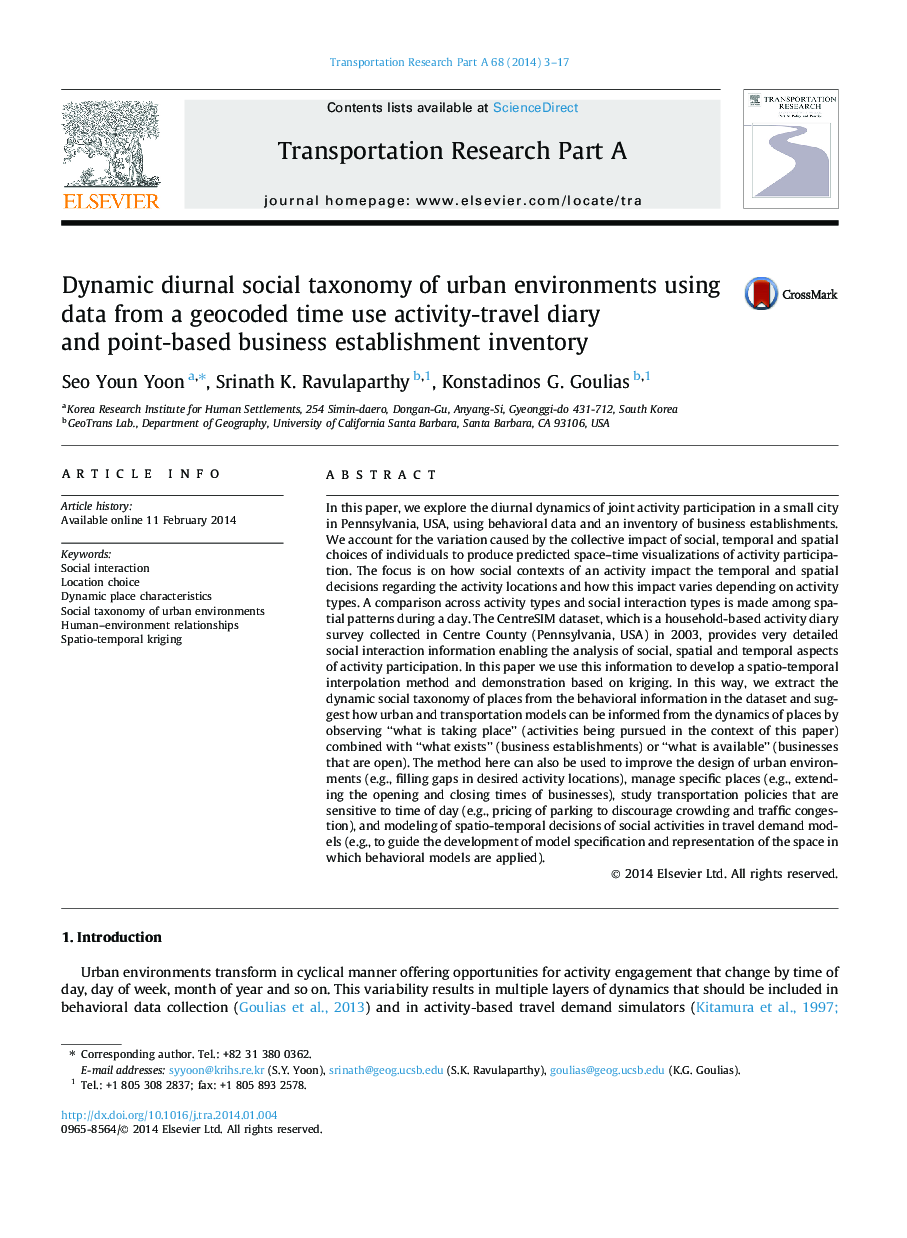| کد مقاله | کد نشریه | سال انتشار | مقاله انگلیسی | نسخه تمام متن |
|---|---|---|---|---|
| 310714 | 533347 | 2014 | 15 صفحه PDF | دانلود رایگان |
• We explore the diurnal dynamics of joint activity participation.
• A spatio-temporal interpolation method is proposed to find the diurnal dynamics.
• The results can be used for urban models and policies sensitive to time of day.
In this paper, we explore the diurnal dynamics of joint activity participation in a small city in Pennsylvania, USA, using behavioral data and an inventory of business establishments. We account for the variation caused by the collective impact of social, temporal and spatial choices of individuals to produce predicted space–time visualizations of activity participation. The focus is on how social contexts of an activity impact the temporal and spatial decisions regarding the activity locations and how this impact varies depending on activity types. A comparison across activity types and social interaction types is made among spatial patterns during a day. The CentreSIM dataset, which is a household-based activity diary survey collected in Centre County (Pennsylvania, USA) in 2003, provides very detailed social interaction information enabling the analysis of social, spatial and temporal aspects of activity participation. In this paper we use this information to develop a spatio-temporal interpolation method and demonstration based on kriging. In this way, we extract the dynamic social taxonomy of places from the behavioral information in the dataset and suggest how urban and transportation models can be informed from the dynamics of places by observing “what is taking place” (activities being pursued in the context of this paper) combined with “what exists” (business establishments) or “what is available” (businesses that are open). The method here can also be used to improve the design of urban environments (e.g., filling gaps in desired activity locations), manage specific places (e.g., extending the opening and closing times of businesses), study transportation policies that are sensitive to time of day (e.g., pricing of parking to discourage crowding and traffic congestion), and modeling of spatio-temporal decisions of social activities in travel demand models (e.g., to guide the development of model specification and representation of the space in which behavioral models are applied).
Journal: Transportation Research Part A: Policy and Practice - Volume 68, October 2014, Pages 3–17
